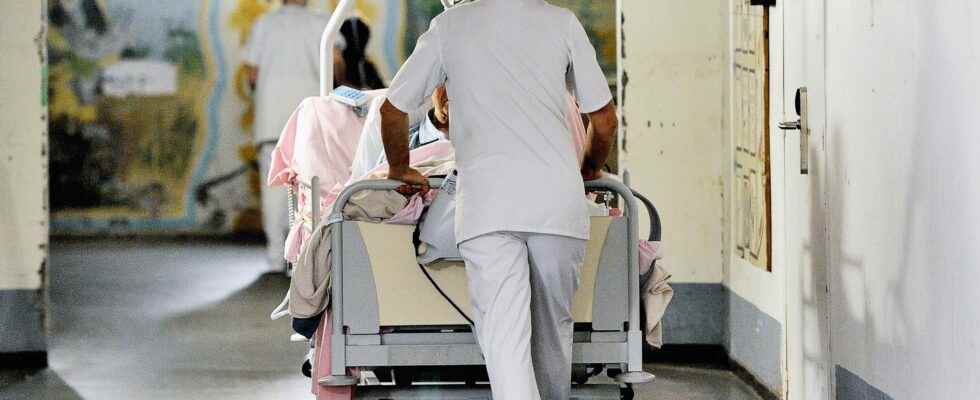The 2022-2023 infant bronchiolitis season has started fast and strong. This is evidenced by the frantic pace of arrivals of young patients at the hospital: 7,000 visits to the emergency room on average per week, and up to 10,000 at the peak of the epidemic, at the end of November. In total, bronchiolitis has affected nearly 50,000 infants, including a third hospitalized in intensive care. In children under two years of age, it is mainly due to the respiratory syncytial virus (RSV). “It is an inflammation of a small bronchiole which prevents air from entering the lungs”, explains Djillali Annane, head of the intensive care unit at Raymond-Poincaré hospital (AP-HP) in Garches (Hauts- de-Seine). The structure of RSV is similar to that of influenza viruses and the coronavirus SARS-CoV-2, the agent of Covid-19. And while bronchiolitis is usually associated with children, it can also infect some adults.
“For adults, we are not going to speak of bronchiolitis, rather of bronchitis – that is to say an inflammation of the bronchi. This covers quite similar clinical entities”, indicates Marie-Anne Rameix-Welti, virologist at the Ambroise-Paré hospital. “We often notice an increase in cases of bronchiolitis in adults in the second part of the epidemic, once the pediatric peak has passed. This is the case this year”, recalls Sophie Vaux, epidemiologist at Public Health France. Because of the extensive circulation of bronchiolitis in children, it is plausible that a similar circulation follows in older patients. “The epidemic is not at all over at this stage,” she warns.
Seniors are more at risk of RSV infection because they have, according to the ministry of health, lower immunity. “Often, bronchiolitis does not follow the same picture as in children. For adults, it presents itself as a flu syndrome, and it is not as rare as you think”, notes Christophe Trivalle, geriatrician at the Paul-Brousse hospital (AP-HP). Among the elderly, those most at risk are those with lung disease, heart disease or other chronic pathology. “If they get an infection, they can cause more serious complications,” continues the geriatrician. “In our department, the first cases arrived four weeks ago. We had a cluster of bronchiolitis in the department, with five or six people in the same unit who were infected with RSV”, continues the specialist.
No supervision for vulnerable adults
There is currently no vaccine against this respiratory disease, but treatments are being developed. “We don’t have any figures, but the impact of the respiratory syncytial virus in elderly patients is very significant. Mortality is considered equal or even higher than the flu. It is a major public health problem”, underlines Marie-Anne Rameix-Welti. According to the specialist, 10% of subjects over 65 who arrive at the hospital with a respiratory symptom have RSV. And 10% of those people will die. In France, however, it remains difficult to obtain precise data, because there is no surveillance for vulnerable adults (pregnant women, the immunocompromised, people aged 65 or over, chronic pathologies, etc.).
“On RSV in the elderly, there is no surveillance system in France, we lack data. But with Covid-19, we have developed and generalized the PCR system. triple tests: influenza, RSV and Covid. So perhaps we will have data on RSV in the years to come”, underlines Christophe Trivalle. In the United States, approximately 14,000 adults aged 65 and over and up to 300 children under the age of 5 die each year.
“Older people will have respiratory symptoms, but the infection will destabilize states that were not very stable. It’s a stress on the body”, adds Marie-Anne Rameix-Welti. Adults under 60 and older children who are carriers of RSV usually have no signs or just a cold, according to the Department of Health. But “RSV is transmitted well throughout the population”, confirms the virologist. Thus, many individuals are contagious but are unaware of it.
